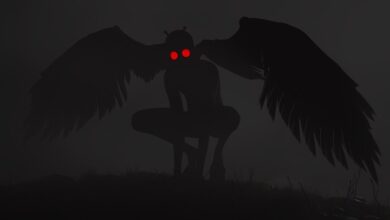Filmmakers Claim to Have Captured ‘Champ’ on Camera While Making Movie about Lake Monster

“We inadvertently found Champ while reviewing video from a drone. It is real footage, not manipulated in any way,” Tabor said.
“We were aiming for some scenic shots of the lake,” Rossi explained, “and we never expected to capture anything like this. We just couldn’t believe our eyes. It’s a thrill to share this unexpected discovery with the world.”
Tabor added, “This adds an incredible layer to our film. While ‘Lucy and the Lake Monster’ is a fictional story about a nine-year-old girl and her grandpa looking for Champ, the reality of capturing something mysterious is what makes this moment so special. It reminds us that sometimes, truth really is stranger than fiction. It even appears to have moving fins like a plesiosaur. Our cryptozoology friends are excited.”
Rossi also said, “It’s only fitting that Kelly, who has looked for Champ over fifty years, would see Champ in the footage first.”
The film, which Tabor insisted is “real footage, not manipulated in any way,” was said by Rossi to currently be under evaluation “by trained scientists with a minimum of one earned doctorate degree in science.”
According to a second press release from August 14th:
The present document delineates the preliminary scientific evaluation of the Tabor-Rossi Champ footage, juxtaposing it with the renowned 1977 Mansi photograph. A comprehensive and exhaustive analysis is scheduled for dissemination in the following year.
The Tabor-Rossi footage constitutes the most compelling extant evidence to date supporting the potential survival of a plesiosaur-like species. It incorporates numerous elements that the 1977 Mansi photograph of “Champ” does not possess:
1. The inclusion of a boat in the footage, occupied by two individuals, provides a critical reference for scale, thereby facilitating an assessment of the dimensions of the observed organism. The boat’s measurements are documented at 11.8333 feet in length and 4.28333 feet in width, with the subject appearing to exceed the size of the vessel. Notably, large sturgeon are documented to reach lengths of up to 7 feet, with the recorded maximum being 8 feet. Conversely, the Mansi photograph lacks any objects for scale reference.
2. The original Mansi Polaroid depicts the Champ entity in relatively shallow waters, not exceeding depths of 14 feet, in proximity to the shoreline. In contrast, the Tabor-Rossi footage was captured via drone technology in the deepest section of Bulwagga Bay within Lake Champlain, effectively eliminating the likelihood of misidentification as a rock formation or sand mounds, which are prevalent in shallower aquatic regions.
3. An additional caveat regarding the Mansi photograph pertains to the inability of Sandra Mansi to determine the precise location where the image was acquired. In contrast, the Tabor-Rossi footage benefits from the corroborative accounts of multiple eyewitnesses, including cast and crew members, who have unequivocally identified the exact geographic coordinates of their filming location.
4. Importantly, Sandra Mansi did not retain the original negative of her photograph. The Tabor-Rossi footage is distinguished by its production in high resolution using a quality drone camera. The five seconds of footage available on YouTube represent only a diminutive sample of the entirety encompassing a broader five-minute segment that includes the subject in question. This raw footage was retained, allowing for enhanced scientific scrutiny through subsequent review. Initial morphological assessments, conducted through pixel and color threshold adjustments, as well as zoom enhancements, reveal concordance with established plesiosaur anatomical features, while presenting proportions inconsistent with sturgeon or alternative explanations. Noteworthy characteristics include, but are not limited to:
a. A flattened plesiosaur head
b. Locomotion via reptilian-like fins
c. A slender, serpentine neck in conjunction with a more robust body structure
A series of rigorous tests is slated for execution and will be submitted for scientific peer review as part of a scholarly article in the upcoming year, thereby inviting formal academic scrutiny of these findings.




